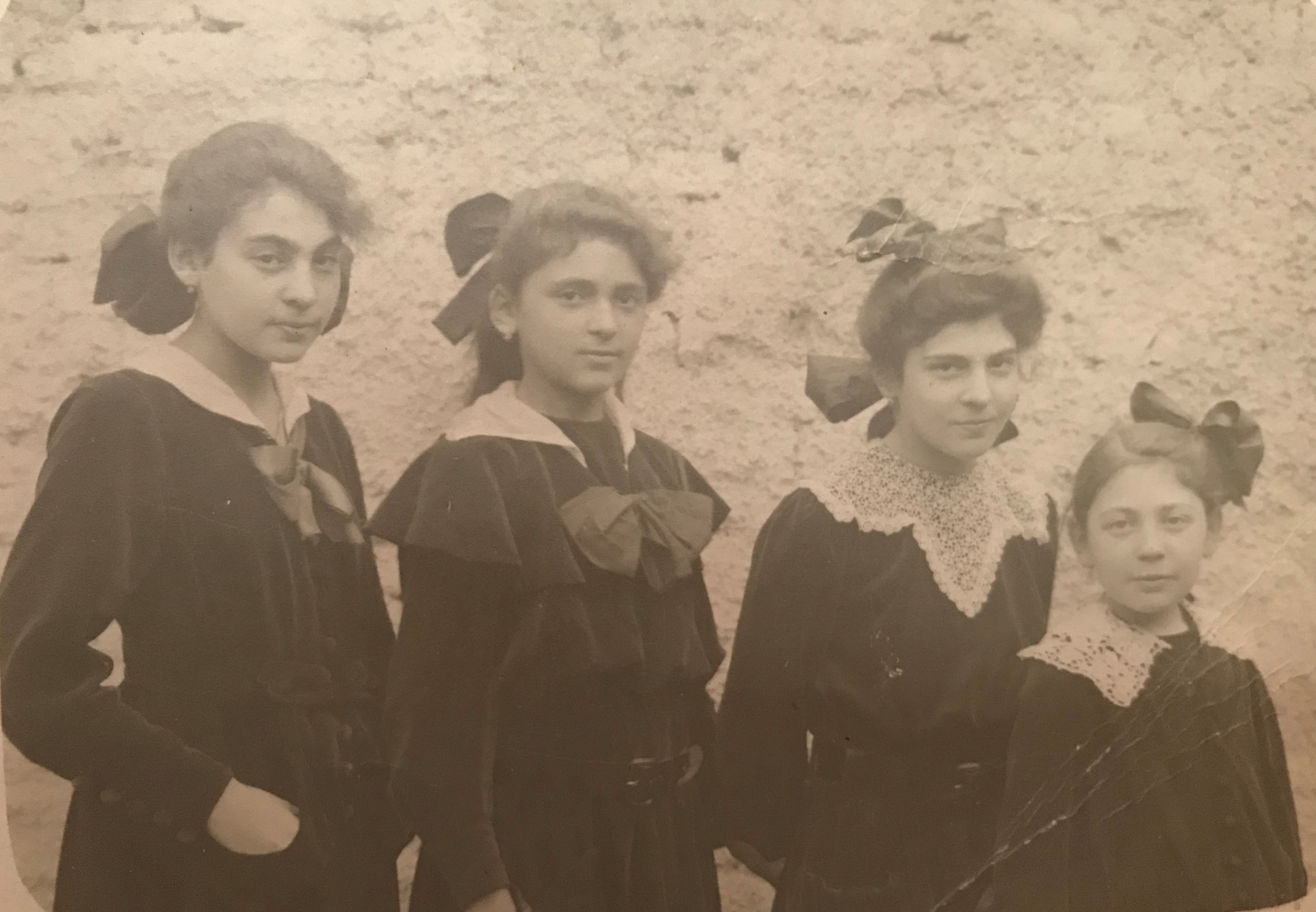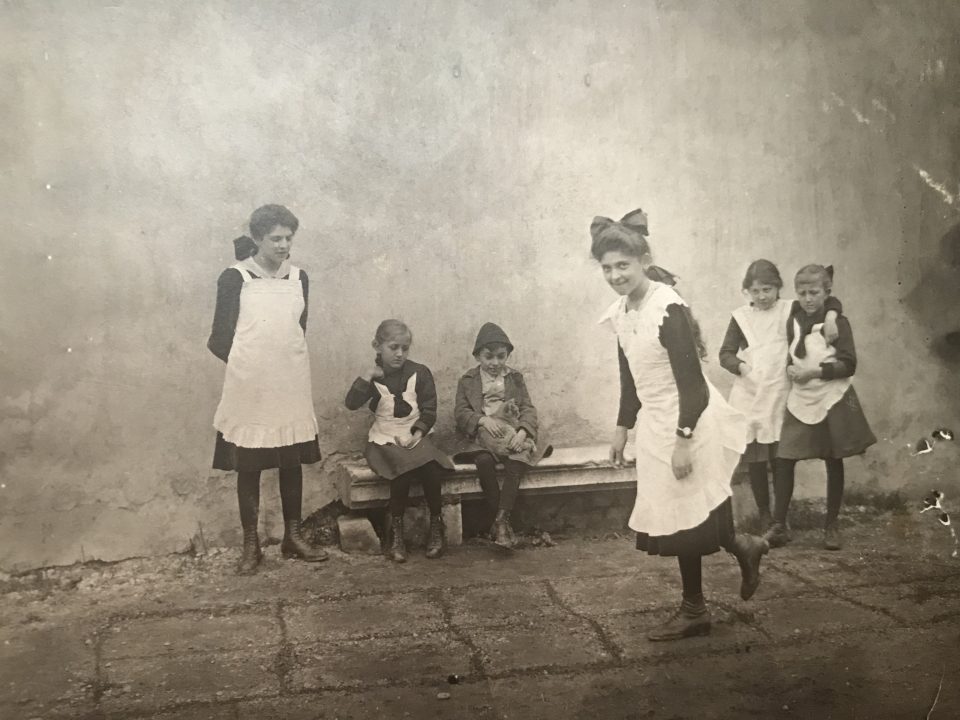THE VIENNESE‘ENTHUSIASM FOR CLASSICAL MUSIC: THE VIENNA OPERA’S STANDING ROOM AUDIENCE IN THE FIRST HALF OF THE 20th CENTURY

My grandmother Flora Kainz, née Sobotka, who everybody called “Lola” grew up with her three sisters, Käthe, Agi and Mitzi, in Kaiser Ebersorf near Vienna in a bourgeois family. Her father, Ignaz Sobotka, was the manager of the brewery in Kaiser Ebersdorf (see article on beer brewing in Vienna). She was born in 1902 and received the standard education of a middle class girl of the time. In the course of the musical education that all girls of her class underwent at that time, it was discovered that she had some talent for the piano. Lola showed an intense interest for the opera and regularly went to see performances at the Vienna Opera in the standing room area, which was extremely popular among the young in those days. Lola was a very charming happy-go-lucky girl who loved all kinds of entertainment and went out a lot, much to the regret of her father. She even had her cut, which was a sacrilege for a young bourgeois woman in the early 1920s. When she came home after her visit to the hair dresser she hid her hair under a funny hat and with jokes made her father laugh out loud and finally went unpunished. None of her sisters would have dared to challenge their father’s rules in the way she did. She liked dressing up, going to parties and going out with groups of young men and women for sports and entertainment – and the opera’s standing room. She adored tenors such as Leo Slezak, Joseph Schmidt and Richard Tauber and waited for the adored singers after the performance in front of the stage door or watched their films in the cinema.
She was admitted to the Vienna Musical Academy in the piano class of Professor Manhart. Later on in her life she was still very proud of that achievement, but admitted that she had not been serious enough. She was not the hardworking studious type as she loved entertainment too much. She used the smallness of her hands and the narrow span between her fingers as an excuse and quitted the class to start work as a shop girl in a sweet shop, where she got to know her later husband, Anton Kainz, my grandfather. After Ignaz Sobotka had lost his job as the manager of the brewery in Kaiser Ebersdorf, the family moved to a small flat in Vienna, Mariahilferstrasse. Ignaz worked as a menial labourer for the construction company “Teerag-Asdag” and the family was no longer well-off. But Lola’s enthusiasm for classical music, especially the opera, never ceased and the standing tickets in the opera were very cheap. Yet despite her skills as a pianist she was always reluctant to play the piano at home. Her husband, Toni, was an amateur who loved the piano, but he always had to urge Lola and coax her into playing with him four-handed piano pieces. Nevertheless, the classical opera remained with her all her life and when I was a child we always had to listen to the one-hour radio programme after lunch the “Opera Concert”, when she told me about the greatest opera singers and her favourite arias. My parents, her daughter Herta and her husband Werner, carried on that tradition. During my whole childhood and youth we listened to records of classical music in the evening – there was no television set bought – and went to operas, classical concerts and operettas. At the reopening of the Vienna Opera house on the “Ring” in 1955, which was destroyed at the end of World War II, my parents acquired a subscription for the Vienna Opera, which they kept until just a few years before they died in 2016. My mother being a dressmaker and my father an electrician, they could only afford the cheapest category, which was the last row before the gallery standing room, but they loved it and were very proud of their subscription that dated back to the reopening of the opera. They knew the opera lovers sitting next to them and enjoyed the atmosphere of the standing room audience behind them without having to endure hours standing up while listening to Wagner, Verdi and Richard Strauss. They also saved up for tickets to see one of the first “New Year’s Concerts” in the now world-famous “Musikverein” after the war.

Lola in front playing with children in Kaiser Ebersdorf 
Lola as girl 
Lola with short hair 
Lola with short hair as a student
The Vienna State Opera was a court theatre at the time of the Habsburg Monarchy, financed by the state, just as the “Burgtheater”. After the end of the monarchy, the Austrian Republic took over the financing of the state operas and theatres. In 1870 the old court opera house, the “Kärntnertortheater” was demolished and a new building was erected at the Ringstrasse – today’s “Staatsoper”. The architects van der Nüll and Sicardsburg designed a building in the romantic- historical style. The new opera house was opened in 1869 with Mozart’s “Nozze di Figaro”. After an Allied bombing attack the opera was destroyed on 12 March 1945. Only the main walls, the great staircase and the Emperor’s tearoom survived. Soon after the end of the Second World War the reconstruction of the legendary monument to Vienna’s love for classical music started. The opening ceremony took place on 5 November 1955, when Karl Böhm directed Beethoven’s “Fidelio”.

